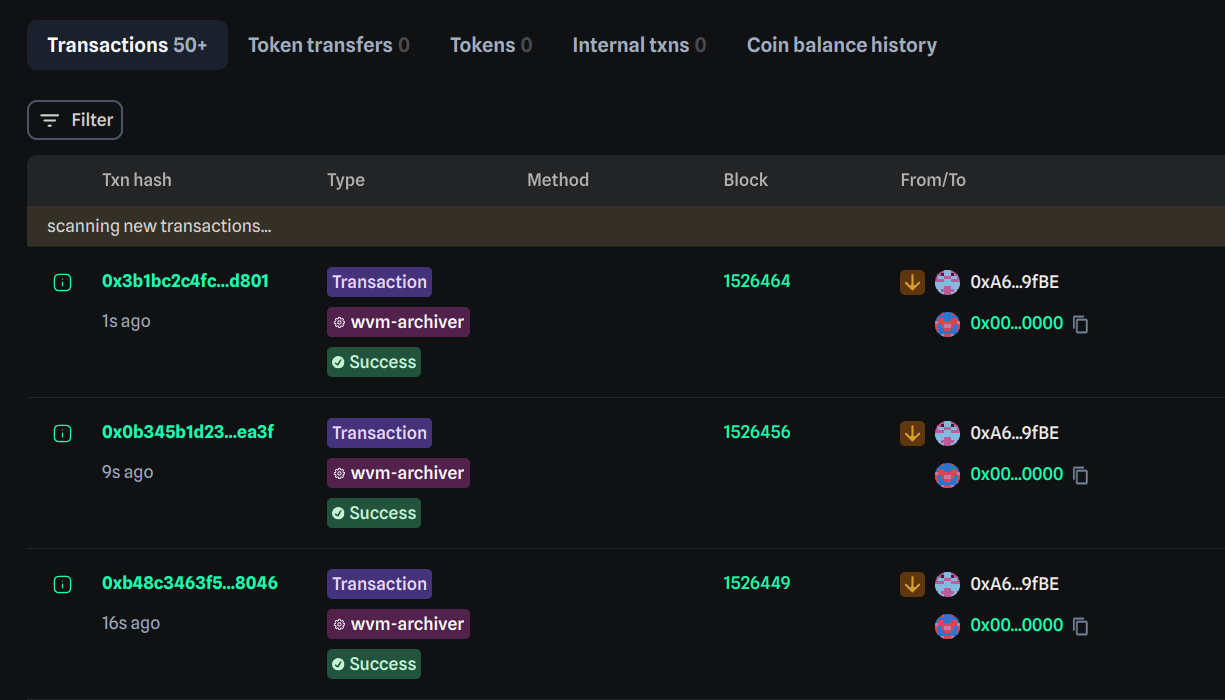TL;DR: RSS3’s value sublayer now utilizes WeaveVM for backup permanent ledger storage, ensuring history is always available and eliminating the risk of losing data (and funds) if other solutions fail. This provides a trustless mirror of RSS3 data with clear provenance, adding transparency to the black box nature of L2s, with new blocks being settled permanently to Arweave as soon as they come in.
Introducing RSS3
RSS3 is a decentralized network for open information, inspired by the original RSS protocol’s vision for standardizing the dissemination of structured data. The network is split into two layers: the data sublayer, and the value sublayer. The data sublayer is responsible for indexing and structuring information from chains, web3 social, and DeFi protocols. The value sublayer is an OP Stack-powered L2 network handling information ownership, attribution and monetization.
The network serves hundreds of millions of monthly data requests from a decentralized set of almost 100 nodes. Workers in the RSS3 network continuously monitor Open Data Protocols and structure protocol information in a standardized format for AI models and agents.
Integrations for dApps include Opensea, Lens, Mirror, Arbitrum’s premier DeFAI platform AISweatShop, and Polymarket. And chains like Base and Arbitrum post data streams in full. Social content ingested by RSS3 powers tooling like Plasma Finance, Firefly, web3.bio, and the Metamask social notifier snap as well as being piped for training and AI-automated actions using the OpenAgent Framework.
WeaveVM & RSS3
RSS3’s value sublayer now utilizes WeaveVM for backup permanent ledger storage, ensuring history is always available and eliminating the risk of losing data (and funds) if other solutions fail. This provides a trustless mirror of RSS3 data with clear provenance, adding transparency to the black box nature of L2s, with new blocks being settled permanently to Arweave as soon as they come in.
WeaveVM is a sovereign EVM network built towards the goal of solving the EVM storage dilemma with Arweave. It gives the coming generation of high-performance chains a place to settle and store onchain data, without worrying about cost, availability, or permanence.
WeaveVM storage is a fraction of the cost of storing data on Ethereum, and even cheaper than L2 calldata. That’s because it uses Arweave under the hood. Arweave is a purpose-built permanent storage chain, with a network size of 300 petabytes spread across hundreds of miners. WeaveVM provides a native EVM interface for chains to hook into Arweave storage at the ledger, DA, and smart contract level.
The WeaveVM Archiver
The WeaveVM Archiver is an ETL pipeline tool designed to store any EVM chain’s data on Arweave via WeaveVM. All new block data is settled on WeaveVM in realtime, and all historical ledger data is backfilled. The RSS3 VSL archiver address can be found here on the WeaveVM explorer.
By integrating the WeaveVM Archiver, chains can leverage WeaveVM’s permanent data storage without changes to their core architecture, disruptive smart contract redeployments or sequencer forks.
Follow along with RSS3’s journey towards an open internet here, and find WeaveVM on X.
Read more about deploying a permanent archiver for your chain in the WeaveVM docs.

